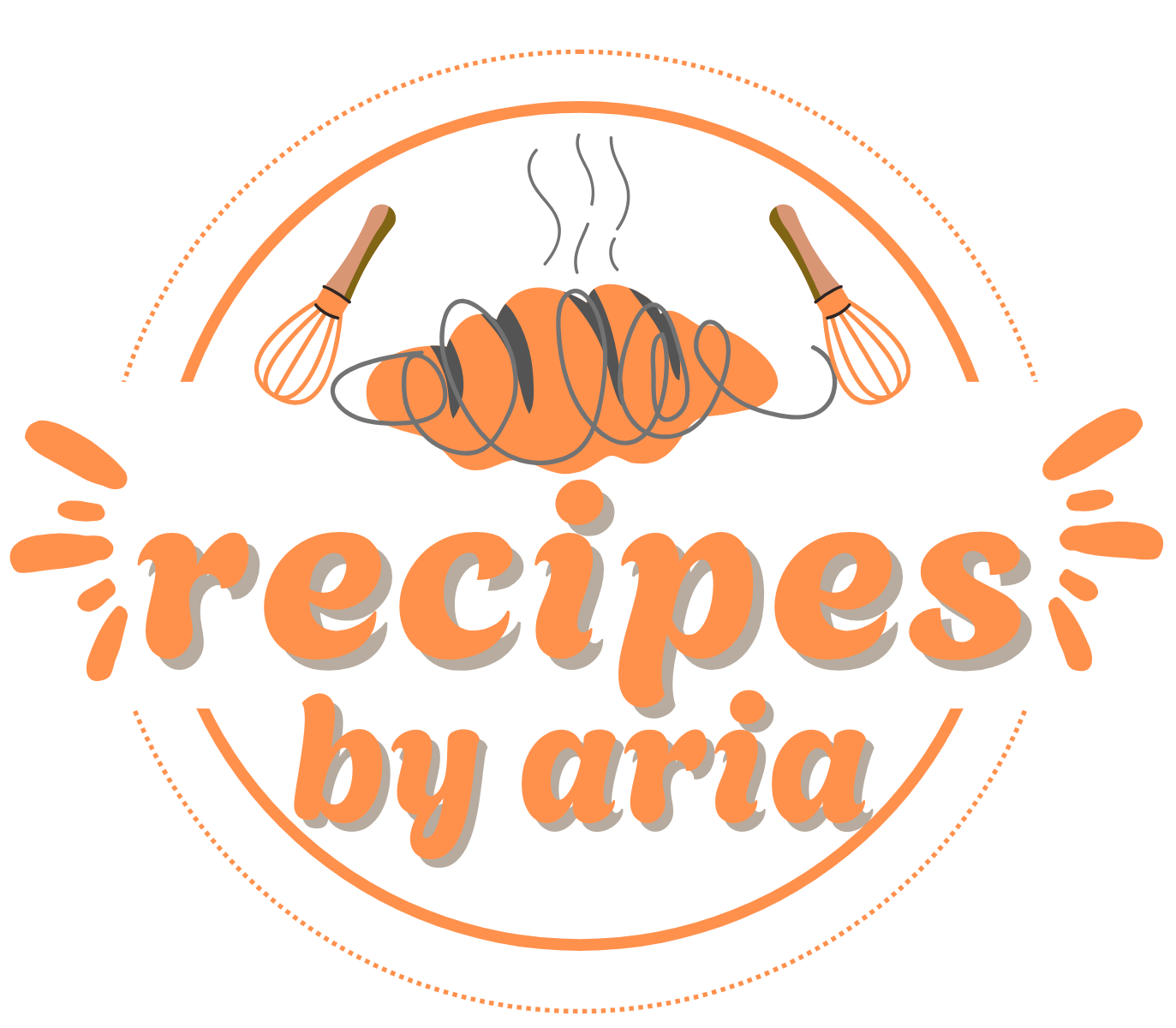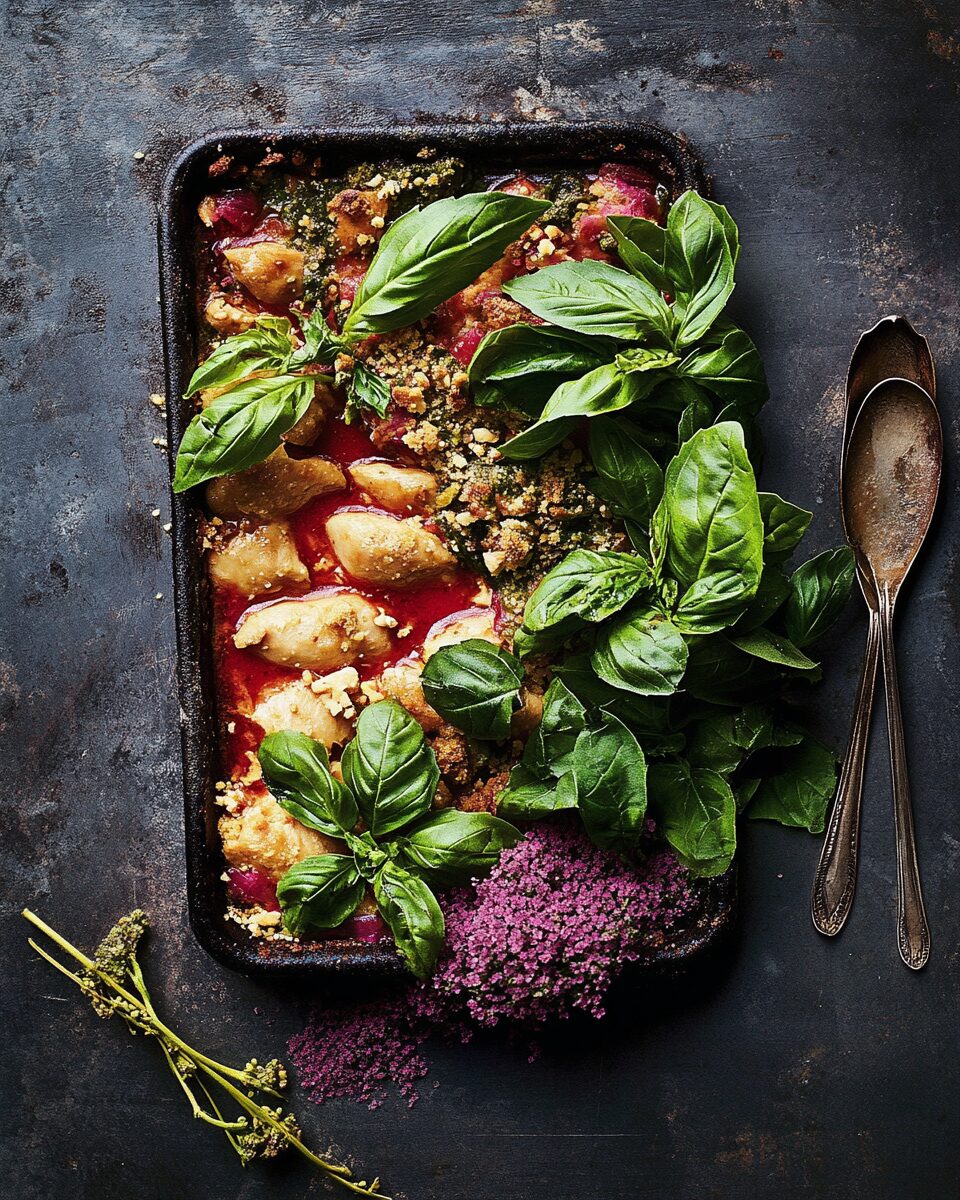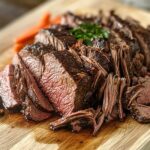This Spicy Thai Basil Chicken, also known as Pad Krapow Gai, is one of Thailand’s most beloved street food dishes. Bold, aromatic, and deeply satisfying, this recipe is everything you need when craving a quick but flavorful meal. It’s the perfect balance of spicy, savory, and herby, all served on a bed of steaming jasmine rice.
What makes this dish a standout is the way the garlic, chilies, and fish sauce come together to create that classic umami punch. Finished with fresh Thai basil and often topped with a crispy fried egg, it’s the kind of meal that tastes like it took hours to make, but comes together in under 30 minutes.
Full Recipe:
Ingredients:
-
500g ground chicken (or finely chopped chicken breast)
-
5 cloves garlic, minced
-
2 Thai red chilies, finely sliced (adjust to heat preference)
-
1 small onion, finely chopped
-
1 tablespoon vegetable oil
-
2 tablespoons soy sauce
-
1 tablespoon fish sauce
-
1 tablespoon oyster sauce
-
1 teaspoon sugar
-
1 handful fresh Thai basil leaves
-
Cooked jasmine rice, for serving
-
Fried eggs (optional, but highly recommended)
Directions:
-
Heat oil in a large skillet or wok over medium-high heat. Add garlic and chilies, stir-frying quickly for about 30 seconds until fragrant.
-
Add onion and cook until slightly translucent, about 2 minutes.
-
Add ground chicken and cook, breaking it apart with a spatula, until fully cooked and browned, about 5–6 minutes.
-
Stir in soy sauce, fish sauce, oyster sauce, and sugar. Mix thoroughly and cook for another 2 minutes.
-
Toss in Thai basil leaves and stir until just wilted. Remove from heat.
-
Serve hot over jasmine rice. Top with a crispy fried egg if desired.
Prep Time: 10 minutes
Cooking Time: 15 minutes
Total Time: 25 minutes
Kcal: 320 per serving
Servings: 4
The Story Behind Spicy Thai Basil Chicken (Pad Krapow Gai)
Spicy Thai Basil Chicken, known in Thailand as Pad Krapow Gai, is one of the most iconic and beloved street food dishes in Thai cuisine. It’s the kind of meal that captures everything Thailand is famous for: bold flavors, aromatic herbs, fast preparation, and a deep sense of comfort. This dish is a staple in Thai households and food stalls alike. Locals often enjoy it as a go-to lunch, dinner, or even late-night meal after a busy day. It’s fast, affordable, and most importantly packed with flavor.
What makes Pad Krapow Gai truly special is its simplicity and harmony of taste. Despite using just a few ingredients, each component plays a vital role in creating an explosion of flavor. The heat from Thai chilies, the fragrance of fresh garlic, the saltiness of fish sauce, the umami of oyster sauce, and the peppery sweetness of Thai basil all come together to create an unforgettable flavor profile. When served with a steaming plate of jasmine rice and topped with a crispy fried egg, it becomes the epitome of Thai comfort food.
The Cultural Importance of Pad Krapow Gai in Thai Cuisine
Pad Krapow Gai is more than just a dish it’s a cultural symbol. In Thailand, the dish is so popular that it’s often referred to as the unofficial national dish. It’s not uncommon to hear a Thai person say, “If you don’t know what to eat, just order Pad Krapow.” This highlights its status as a dependable, universally loved meal.
The name itself offers some insight into its components: “Pad” means stir-fry, “Krapow” is Thai basil, and “Gai” refers to chicken. Thai basil is not the same as the sweet basil you might find in Italian cuisine. It has a more intense, peppery flavor with hints of anise, giving the dish its distinctive aroma and taste. The basil is added right at the end of cooking to preserve its freshness and vibrancy.
In traditional Thai cooking, Pad Krapow is often cooked in a searingly hot wok to ensure that the flavors develop quickly and the texture of the meat remains juicy yet caramelized. This method also helps infuse the garlic and chilies with a smoky depth that’s hard to replicate in Western-style cooking though a good nonstick or cast iron skillet can come close.
Why This Dish is So Popular Globally
Thanks to the global rise in popularity of Thai food, Pad Krapow Gai has found its way onto menus far beyond Bangkok or Chiang Mai. Its appeal lies in how customizable it is. While ground chicken is the traditional base, you’ll often find variations using pork, beef, tofu, or even seafood. Some versions are extremely spicy, while others cater to milder palates. The dish’s adaptability makes it a favorite not just in Thailand, but across the world.
From a nutritional standpoint, it’s also a smart choice. It’s high in protein, relatively low in carbs (aside from the rice), and packed with antioxidants and vitamins from the garlic and basil. When paired with a lightly fried egg, the runny yolk adds richness that elevates the dish to another level of indulgence.
Tips for Making the Best Pad Krapow Gai at Home
There are a few important tips to keep in mind if you want to make an authentic-tasting Pad Krapow Gai at home:
-
Use Thai basil, not sweet basil. If you can’t find Thai basil, holy basil (bai krapow) is even more authentic, though it’s rare outside of Southeast Asia.
-
Do not skimp on the garlic and chilies. These are not just flavor enhancers; they are the backbone of the dish.
-
Use fish sauce and oyster sauce to get the proper umami depth. Soy sauce can be added, but it shouldn’t be the primary salty component.
-
Cook on high heat. A blazing hot wok gives the meat the right texture and allows the flavors to sear and caramelize.
-
Don’t overcook the basil. Add it at the very end of cooking and toss it just until wilted to preserve its aroma and flavor.
Also, the dish is meant to be eaten hot and fresh. It doesn’t reheat as well because the basil loses its fragrance over time. So, cook what you’ll eat and enjoy it immediately for the best experience.
The Egg on Top: Optional but Essential
One of the most loved additions to Pad Krapow Gai is a crispy fried egg, or kai dao. This isn’t your average fried egg it’s typically cooked in hot oil until the edges are beautifully crisp and golden while the yolk remains runny. When broken over the spicy chicken and rice, the yolk adds a creamy, rich contrast to the bold spices, mellowing the heat and tying everything together.
In Thai street food culture, a Pad Krapow without a fried egg feels incomplete. While it’s technically optional, it’s so common that omitting it would surprise most Thai diners.
Pairing Suggestions and Variations
Though traditionally served with jasmine rice, this dish pairs well with other components for a more elaborate meal. Consider serving it with a light cucumber salad, Thai iced tea, or a bowl of clear tom yum soup for contrast.
Vegetarian versions swap chicken for firm tofu or mushrooms and replace fish sauce with soy sauce or tamari. Vegan oyster sauce alternatives are also available and work beautifully in this dish.
You can also control the heat level by adjusting the amount and type of chilies used. Thai bird’s eye chilies are notoriously hot, so feel free to use fewer or switch to milder varieties like serranos or even red chili flakes for a more manageable burn.
A Personal Reflection on Pad Krapow Gai
For many home cooks and Thai food lovers, learning to make Pad Krapow Gai marks a rite of passage. It’s one of those dishes that teaches you the rhythm of wok cooking, the importance of balance in seasoning, and the joy of eating a meal that’s bold, flavorful, and satisfying without being complicated.
Whether you’re recreating a memory from a trip to Thailand or simply exploring new flavor horizons, this dish delivers an experience that’s far more than the sum of its parts. Every bite is a vibrant reminder of Thailand’s rich culinary heritage.
Conclusion:
Spicy Thai Basil Chicken (Pad Krapow Gai) is the kind of dish that brings excitement to the dinner table while staying humble at its core. Its balance of spicy, salty, and aromatic notes makes it deeply comforting yet exhilarating to eat. With just a handful of ingredients and less than 30 minutes, you can transport yourself to the bustling streets of Bangkok and enjoy a dish that has stood the test of time.
It’s a recipe that everyone should have in their repertoire not just for its taste, but for its cultural richness, ease, and the joy it brings in every single serving. Whether you’re new to Thai cooking or a seasoned fan, Pad Krapow Gai is always a good idea.






